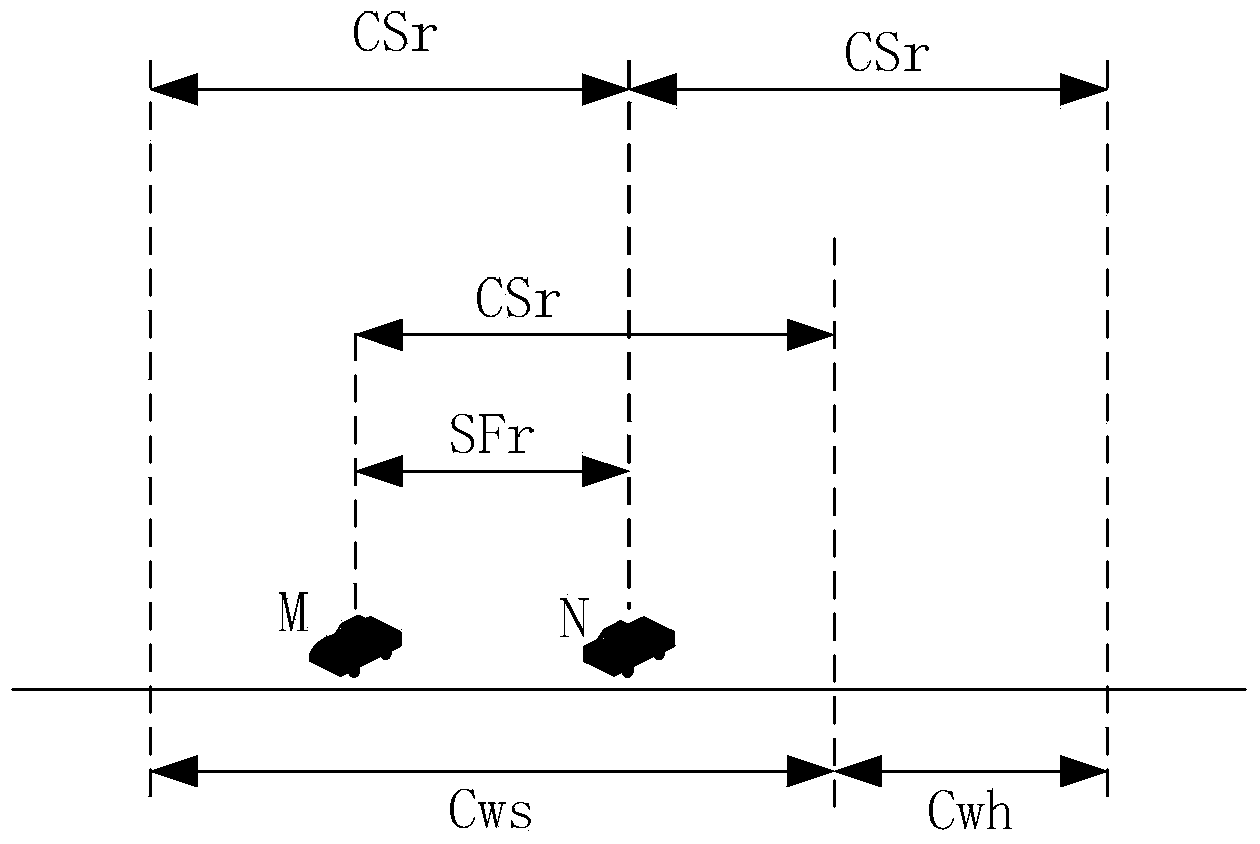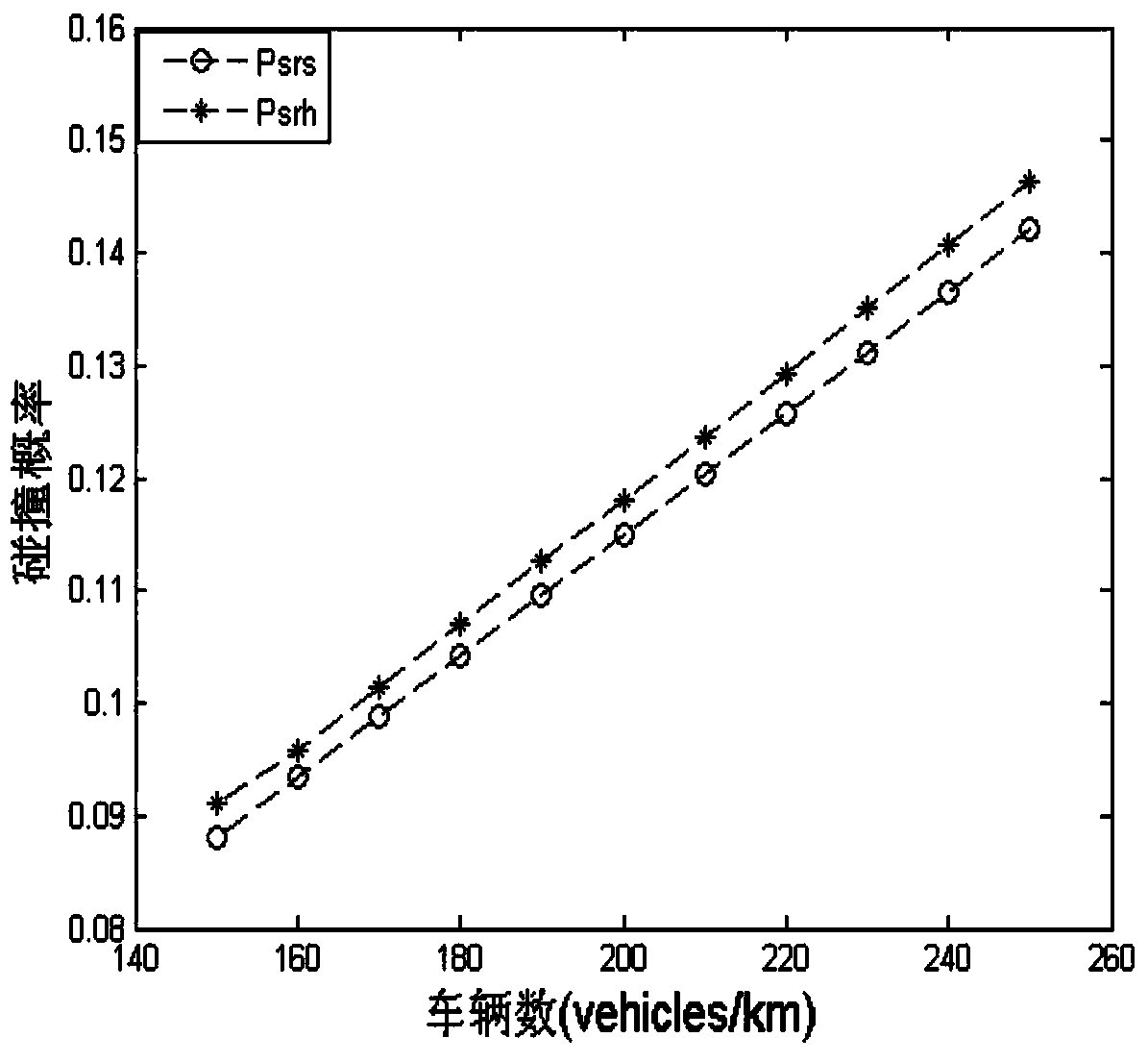Congestion control scheme for jointly regulating physical carrier sense range and minimum competition window in VANET
A carrier sense and competitive window technology, applied in network traffic/resource management, electrical components, wireless communication, etc., can solve the problems of low reception rate of beacon message broadcasting, packet loss, etc.
- Summary
- Abstract
- Description
- Claims
- Application Information
AI Technical Summary
Problems solved by technology
Method used
Image
Examples
Embodiment Construction
[0076] Aiming at the scalability problem of the MAC layer broadcast of the vehicle-mounted ad hoc network with rapid changes in vehicle density, the present invention proposes a safe range-based carrier sense random back-off scheme (Safe Range Carrier Sense Random Back-off, SR-CSRB), By taking into account the characteristics of the Internet of Vehicles, the physical carrier sensing mechanism and the original backoff algorithm are improved to increase the probability of broadcast reception within the safe range and reduce the update delay of adjacent vehicle messages.
[0077] In a VANET, each node periodically broadcasts beacon messages, or Cooperative Alert Messages (CAM), to share location, velocity, and other safety-related information with neighboring vehicles. Messages that need to be notified outside of periodic messages adopt the second security message notification architecture (also known as Distributed Environmental Warning, DEN). CAM and DEN are useful to all surro...
PUM
 Login to View More
Login to View More Abstract
Description
Claims
Application Information
 Login to View More
Login to View More - R&D
- Intellectual Property
- Life Sciences
- Materials
- Tech Scout
- Unparalleled Data Quality
- Higher Quality Content
- 60% Fewer Hallucinations
Browse by: Latest US Patents, China's latest patents, Technical Efficacy Thesaurus, Application Domain, Technology Topic, Popular Technical Reports.
© 2025 PatSnap. All rights reserved.Legal|Privacy policy|Modern Slavery Act Transparency Statement|Sitemap|About US| Contact US: help@patsnap.com



